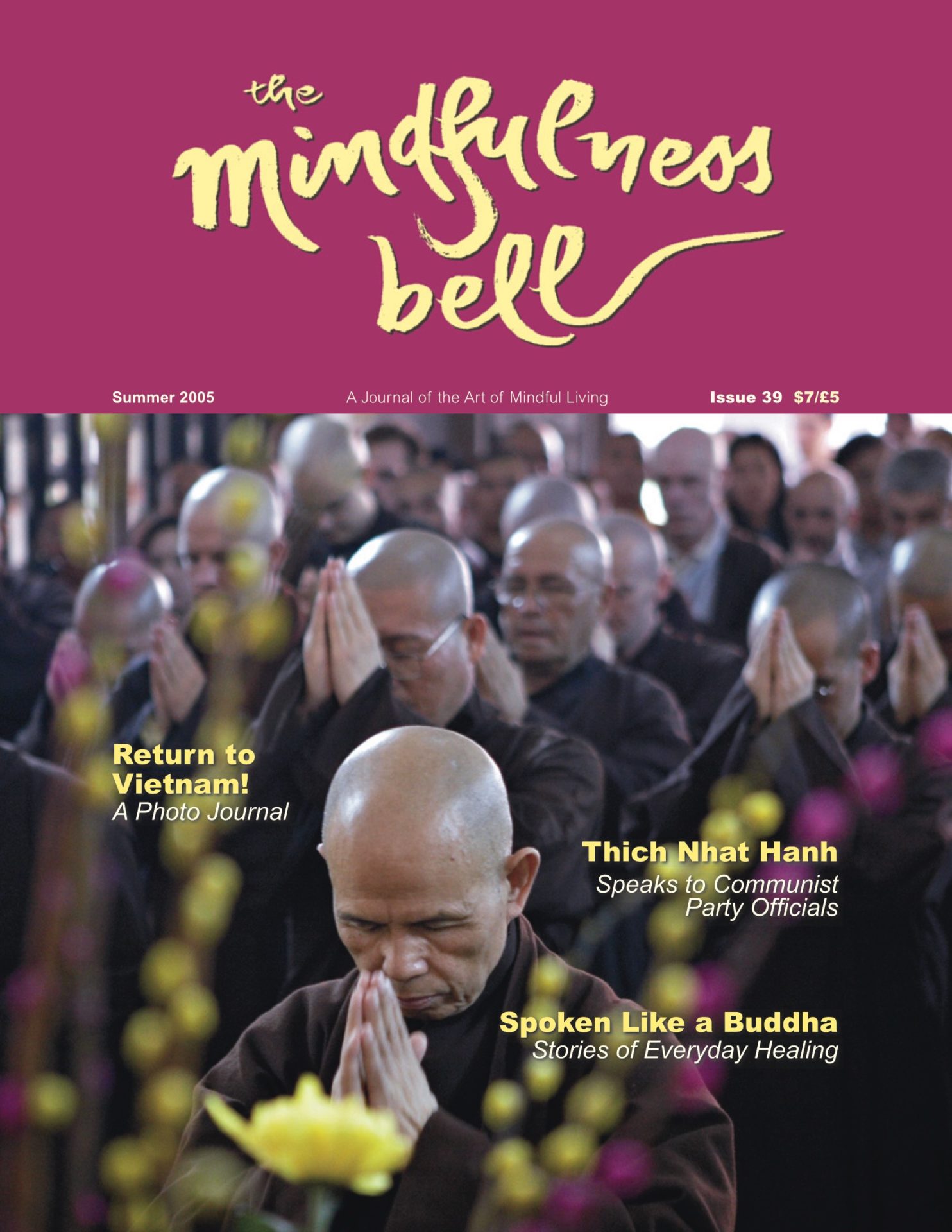Shining the Light Ceremony: Order of Interbeing Aspirant Process
By Lyn Fine

What is the Shining the Light practice, and how can we use it in our Sangha?
In northern California, we have been experimenting with including a formal Shining the Light practice as part of the process of laypeople applying to join the core community of the Order of Interbeing and receive the Fourteen Mindfulness trainings in a formal ceremony.
Shining the Light Ceremony: Order of Interbeing Aspirant Process
By Lyn Fine

What is the Shining the Light practice, and how can we use it in our Sangha?
In northern California, we have been experimenting with including a formal Shining the Light practice as part of the process of laypeople applying to join the core community of the Order of Interbeing and receive the Fourteen Mindfulness trainings in a formal ceremony. Including this practice as part of regular Sangha activity is also being encouraged, as we have come to realize how precious is the connection and open communication that is fostered through this form. The form of the ceremony we use is inspired by and adapted from the monastic practice at Plum Village and is grounded in the description in Friends on the Path, by Thich Nhat Hanh, compiled by Jack Lawlor. However, the form which follows has evolved from our experience, and differs from the written descriptions mentioned. The form continues to change, as we adapt the ceremony to the particular people and needs of the situation.
Aspirant Shining The Light Ceremony
When an aspirant wishes to organize a Shining the Light ceremony, she invites six to eight friends to be present. If the aspirant is applying to receive the Fourteen Mindfulness Trainings and join the Order of Interbeing at a particular time, the aspirant is encouraged to organize the ceremony several months before, and to invite people from her or his family and workplace as well as Sangha friends. In this way, people who know the aspirant well in various areas of her life can be included in the circle of support as she or he contemplates taking this next step of commitment. If practitioners who are not aspirants would enjoy receiving guidance in a Shining the Light ceremony, the participants are generally only Sangha friends. Allow two hours or so for the ceremony. The facilitator is usually a Dharma teacher or an Order of Interbeing member.
The Ceremony
Bell: Sound the bell three times.
Welcome: Facilitator welcomes everyone and gives a brief statement of the purpose of the gathering. A copy of the description in Friends on the Path can be made available to all participants. Everyone is invited to share their name and their connection with the aspirant.
Sitting Meditation: Five to twenty minutes. Participants may enjoy silently offering lovingkindness meditation and flower-watering to the aspirant during the sitting, noticing where they have seen wholesome seeds arising. Begin and end the sitting by sounding the bell.
Aspirant Sharing: Facilitator invites everyone to follow their breathing and enjoy deep listening, then invites the aspirant to share for about ten minutes. Topics for sharing could include: the joys and aspirations of her practice, how she sees wholesome seeds manifesting, what suffering has been transformed, and one or two current growing edges or challenges in relationship to practice with the Fourteen Mindfulness Trainings. After the aspirant has finished speaking and the bell is invited, participants sit in silence, following their breathing for two or three minutes, to receive with full awareness the aspirant’s sharing.
Participants’ Sharing: The facilitator invites the participants to shine light on the aspirant’s practice. Practices which encourage deep listening and loving speech are explained, such as: bowing in and out to signal the desire to start and finish speaking; enjoying the sound of the bell at the end of each sharing; and conscious breathing throughout.
To encourage and support the aspirant, the participants share any nourishing and beneficial impact the aspirant has had on them. In addition, they can mention several growing edges they see in the aspirant, one or two seeds they would like to water and encourage to grow even more. The aspirant receives what is said with an open heart, in silence.
Sit: After everyone who wants to has spoken, there are a few minutes of sitting meditation.
Dialogue: The facilitator may then invite the aspirant and participants to share with each other questions that have arisen or responses to something that has been said.
Seek Consensus: If the practitioner is an aspirant applying to receive the trainings, and support of the participants by consensus is requested, the facilitator states: ________has requested to receive the Fourteen Mindfulness Trainings and join the core community of the Order of Interbeing at ____________on ______date________.
Are there any questions, concerns, or doubts that anyone would like to put into the circle at this time? If someone speaks, discussion of the concern or question follows, after which the facilitator again poses the statement. If no one speaks, the facilitator makes the statement again. After the facilitator has repeated the statement three times with no one choosing to speak, the facilitator acknowledges with joy that the group has reached consensus to support the aspirant’s application. If there is not yet consensus, it is acknowledged that more reflection would be appropriate and this is scheduled.
If the practitioner is not an aspirant, the group may enjoy a few minutes of sitting meditation, and offer gratitude to each other.
Bell: Followed by informal conversation, hugging meditation, and tea.
Lyn Fine, True Goodness, is a Dharma teacher guiding several Sanghas in the San Francisco bay area.

